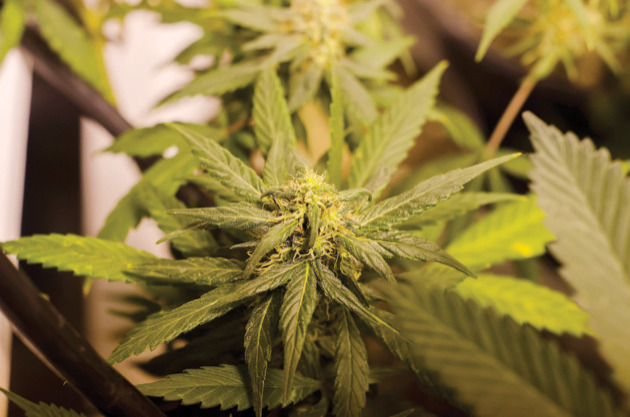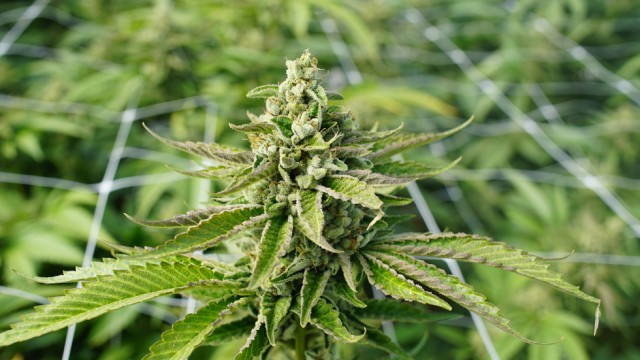Some medical marijuana patients in Illinois say the drug has allowed them to reduce or eliminate their use of other prescription medication, a new study reports.
The study by DePaul and Rush universities was small, with 30 participants, and involved only those who volunteered to respond to the topic, so researchers conceded the results might be biased in favor of marijuana. But it’s believed to be the first peer-reviewed, published research of medical marijuana patients in Illinois.
And it provides direct anecdotal evidence of what has been suggested by previous studies, that marijuana may contribute to reduced use of opioid drugs, lead author Douglas Bruce said.
“One of the most compelling things to come out of this is that people are taking control of their own health, and most providers would agree that’s a good thing,” said Bruce, assistant professor of health sciences at DePaul. “But the lack of provider knowledge around what cannabis does and doesn’t do, the difference in products and ingestion methods and dosing, is all kind of a Wild West.”
The U.S. Centers for Disease Control and Prevention has declared opioid abuse an epidemic. Overdoses from prescription opioids like methadone, oxycodone and hydrocodone killed more than 15,000 people in 2015, and President Donald Trump called it a “national emergency.”
And the study results come as the Medical Cannabis Alliance of Illinois, a trade group of growers and sellers, is starting a push for legislation allowing marijuana for any condition for which a doctor would give opioid drugs.
“This study confirms exactly what we know from patients,” said alliance Chairman Ross Morreale. He also founded Ataraxia, which runs a cultivation center and a dispensary. “A patient could use both (marijuana and prescription drugs) and see what works — that’s between the doctor and the patient.”
But Kevin Sabet, a former White House adviser on drug policy who now runs Smart Approaches to Marijuana, which opposes broad legalization of medical marijuana, said the study “reeks of problems.”
“One of the worst I’ve seen in a while,” he said via email. “It was an uncontrolled observation of 30 people who were mixing pot with other drugs.”
Since marijuana contains numerous compounds, some of which have medicinal properties, Sabet said they should be isolated, tested and approved individually through the U.S. Food and Drug Administration, like any other legal drug.
Bruce, the study’s lead author, responded that Sabet has his own bias against marijuana.
“There’s power in people telling their stories in a way you can’t get in a survey,” Bruce said. “It’s important to do qualitative research to understand how people are using cannabis, then figure out how to measure it.”
Illinois is one of 29 states that have legalized medical marijuana, despite a federal prohibition on the drug.
About 25,000 people have been certified as having at least one of about 40 serious medical conditions that qualify them to receive medical cannabis in Illinois. Patients bought about $8 million worth of marijuana in August, the most recent month reported by the state.The most common conditions for which cannabis was certified were fibromyalgia and cancer, the Illinois Department of Public Health reported. Those were followed by post-traumatic stress disorder, which was just added to the list of qualifying conditions last year.
In the DePaul-Rush study, the average age of participants was 45 and typically used marijuana to treat pain, seizures or inflammation.
The patients, who were anonymous, reported concerns about side effects, addiction and tolerance with prescription drugs, and said they believed marijuana managed certain symptoms better and was faster-acting and longer-lasting.
The researchers concluded that more patient study is needed to determine what doses relieve symptoms and to assess patients’ medical conditions.
One medical cannabis patient who did not participate in the study but said she used marijuana to get off prescription drugs was Shea Evans, 26, of Chicago, who works for Modern Cannabis dispensary in Chicago.
Evans said she was diagnosed with lupus and fibromyalgia in 2011, was prescribed a fleet of 18 drugs, including opioids and sleeping pills, and within a year developed a dangerous dependency on painkillers such as Percocet.
“Medical cannabis is the reason I’m opiate free now,” Evans said. “It really gave me my life back and makes my pain manageable, without inebriating me or forming another dependence.”
Study participants quoted in the report struck a common theme in their deep dissatisfaction with many of their prescription medications. One 58-year-old man called the side effects of his seizure medicine “frightening to say the least. I would not like the way I felt taking it.”
One patient said she used to take 180 Vicodin a month. Another took ibuprofen by the hundreds over time. A woman with HIV and cancer said marijuana was helping her after years of trying to get off the anti-inflammatory prednisone.
And a 33-year-old woman with multiple sclerosis said marijuana helped relieve “unbearable” pain to let her sleep, in contrast to her prescription medicine, which made her feel like a “zombie.”
credit:420intel.com













